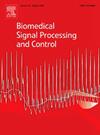Extended Spatiotemporal Separation for noise reduction in magnetocardiography
IF 4.9
2区 医学
Q1 ENGINEERING, BIOMEDICAL
引用次数: 0
Abstract
Magnetocardiography (MCG) is a fast and noninvasive method for diagnosing heart diseases but is very susceptible to external noise. MCG using optically pumped magnetometers (OPMs) has the advantages of not needing cooling and high time resolution. The Spatiotemporal Signal Space Separation method can effectively suppress noise outside the heart in the MCG. However, the number of MCG sensors is relatively small, and sensors are usually arranged flat, which limits the use of spatiotemporal signal space separation in MCG. Therefore, this paper proposed a new method called Extended Spatiotemporal Separation (ESTS) based on Signal Space Separation (SSS), which is suitable for smaller and flat-arranged channels. Besides, we proposed a real-time automatic ESTS method to remove destructive huge noise while ensuring less distortion. In addition, we conducted simulations and experimental verifications to prove the effectiveness of ESTS in MCG noise reduction. We compared it with ordinary SSS and standard denoising methods like Independent Component Analysis (ICA). The results show that when faced with a huge noise for MCG with few sensor channels, ESTS has a higher signal-to-noise ratio (SNR) and can better restore the waveforms. As a result, this paper provided new ideas for clinical real-time noise reduction of MCG and unshielded MCG measurement.
求助全文
约1分钟内获得全文
求助全文
来源期刊

Biomedical Signal Processing and Control
工程技术-工程:生物医学
CiteScore
9.80
自引率
13.70%
发文量
822
审稿时长
4 months
期刊介绍:
Biomedical Signal Processing and Control aims to provide a cross-disciplinary international forum for the interchange of information on research in the measurement and analysis of signals and images in clinical medicine and the biological sciences. Emphasis is placed on contributions dealing with the practical, applications-led research on the use of methods and devices in clinical diagnosis, patient monitoring and management.
Biomedical Signal Processing and Control reflects the main areas in which these methods are being used and developed at the interface of both engineering and clinical science. The scope of the journal is defined to include relevant review papers, technical notes, short communications and letters. Tutorial papers and special issues will also be published.
 求助内容:
求助内容: 应助结果提醒方式:
应助结果提醒方式:


